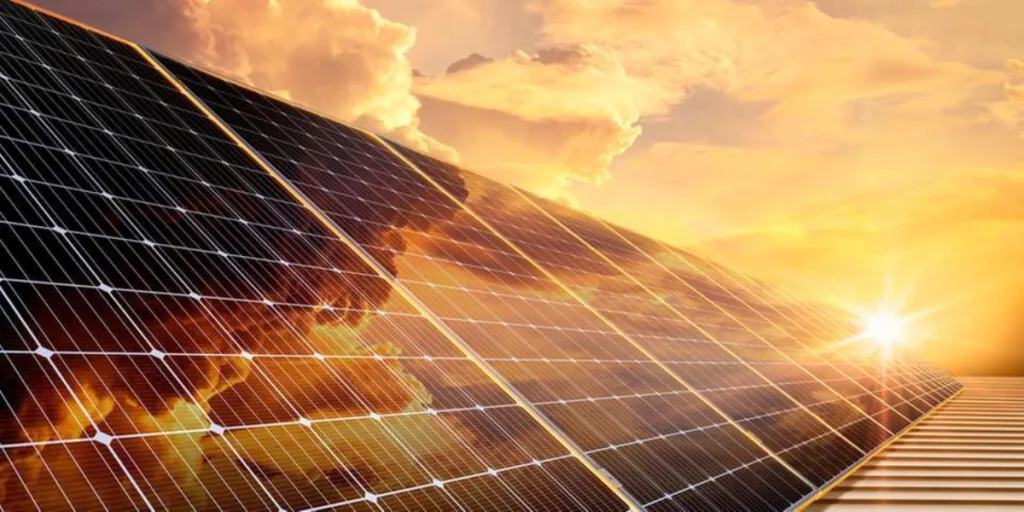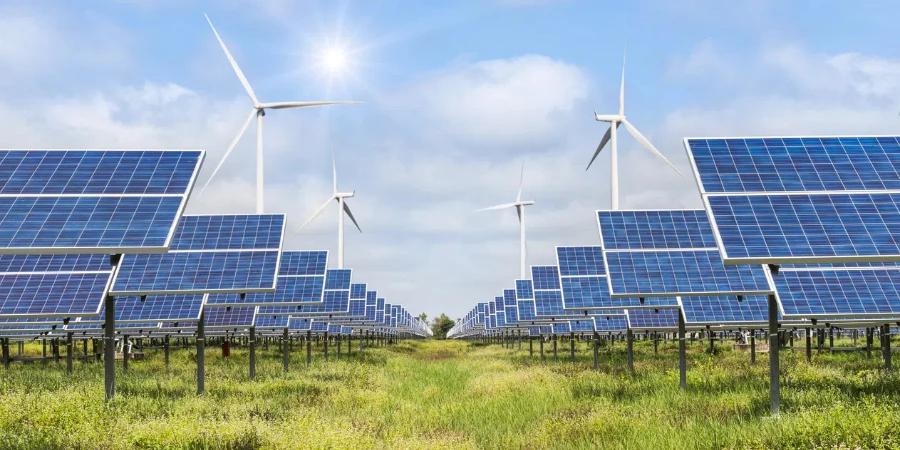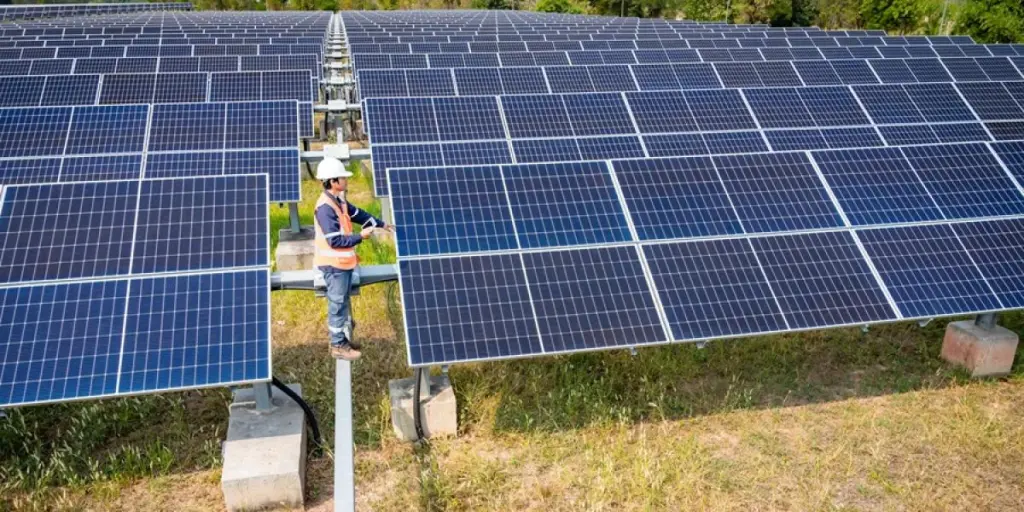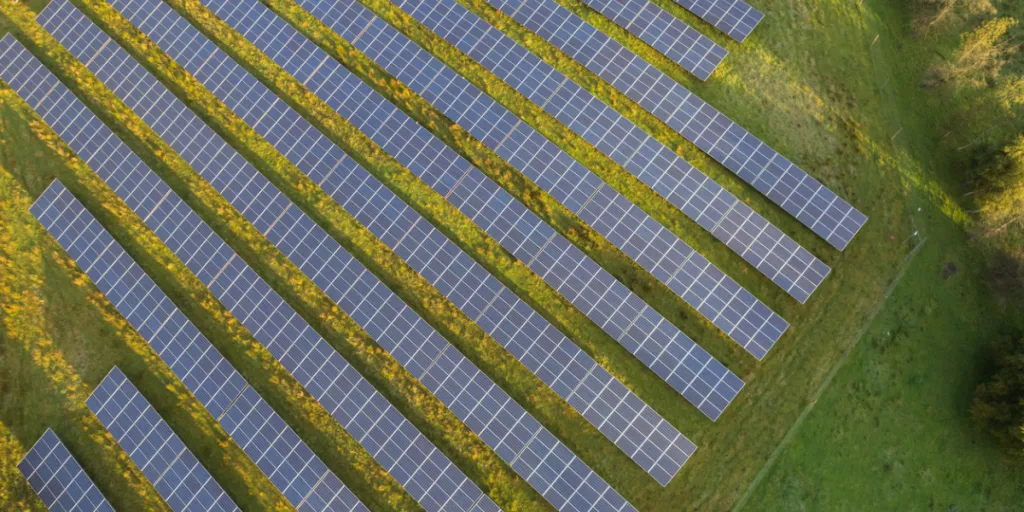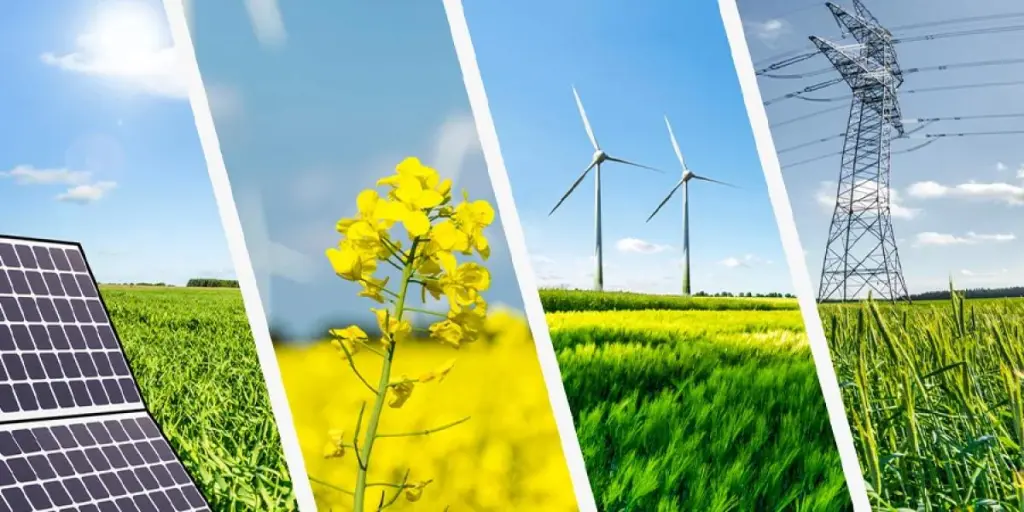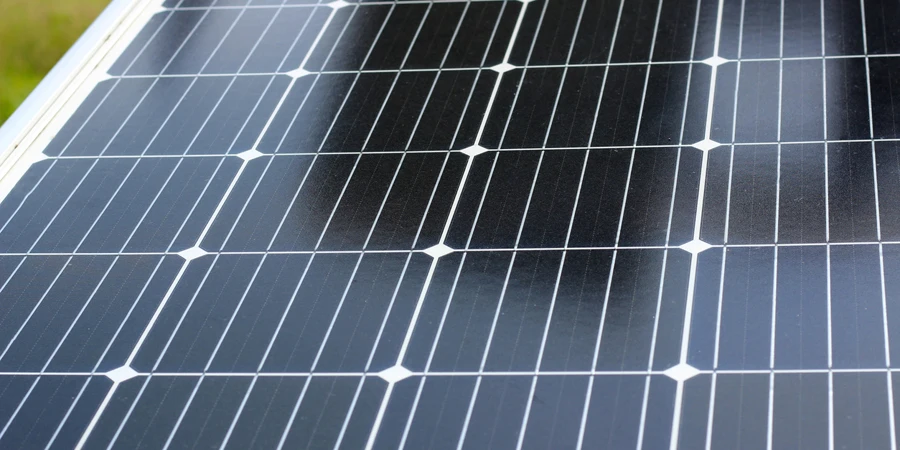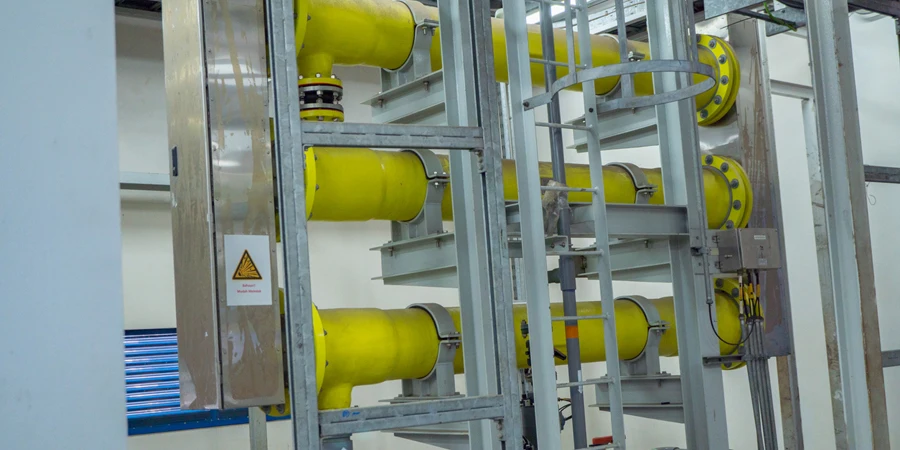Nowadays, solar panels offer a reliable energy solution. Not only do they reduce your dependence on the grid, but they can also save you a lot of money on your electricity bills.
This article introduces the basic concepts of solar panels, their categorizations, trends and challenges, and tips on how to choose the best variety for your needs.
Table of Contents
An overview of solar panels
Market size and growth
Categories of solar panel
Trends and challenges
Some tips before you buy
An overview of solar panels
Solar panels use photovoltaic (PV) cells to convert sunlight into electricity, providing users the opportunity to power their homes or businesses off the grid while also reducing electricity bills.
Solar panel systems consist of multiple individual PV cells comprising a silicon layer, a phosphorus layer (which provides a negative charge), and a boron layer for renewable energy (which provides a positive charge).
Meanwhile, photovoltaic cells are a thin sheet of photovoltaic semiconductors that generate electricity directly from the sun and output voltage as long as there is sufficient sunlight.
Solar panels are generally categorized into the following types: monocrystalline solar panels, polycrystalline solar panels, thin-film solar panels, PERC solar panels, and bifacial solar panels. Solar panels can be deployed in different areas of a property depending on the type of solar panel.
Residential solar panels typically measure 1.6×1 meters (approximately 5.25×3.25 feet), and each panel typically produces between 250 and 400 watts of power. Commercial solar panels may be larger and correspondingly higher in power.
Solar panels typically have a lifespan of between 25-30 years, but this largely depend on the brand and quality. Most rigid solar panels will provide a minimum of 20 years performance guaranteed.
Market size and growth
Grandview estimates that the global market value of solar panels reached USD 170.25 billion in 2023. This figure is expected to witness at a CAGR of 7.7% year on year thanks to continuing surges in demand.
China’s solar panel demand was up to 36.4%, while demand in Europe, North America, Asia-Pacific, and India rose by 16.8%, 17.6%, 13.2%, and 6.9%, respectively. Europe and North America account for 34.4% of the world’s demand.
Demand in Germany, Spain, Poland, the Netherlands, and other European countries has even doubled over the years. The United States, Germany, and other parts of Western Europe are facing a substantial increase in residential electricity and natural gas costs, leading these countries to adopt solar energy at a faster rate.
Categories of solar panel
Solar panels are mainly categorized into monocrystalline silicon solar panels, polycrystalline silicon solar panels, thin film (amorphous silicon) solar panels, PERC solar panels, and bifacial solar panels.
Monocrystalline solar panels
Monocrystalline silicon solar panels feature a continuous and uniform crystalline structure, which means that electrons flow through the material more easily, resulting in increased efficiency.
These cells are cut from a single large silicon crystal, giving them a rounded, square appearance. Monocrystalline silicon solar panels are relatively expensive to manufacture, largely due to the lower utilization of silicon materials during production and the complexity of the production process itself.
Monocrystalline silicon solar panels typically have conversion efficiencies between 15% and 22%, which is one of the highest efficiencies available in commercial solar cells today.
This type of solar panel has the following advantages:
High efficiency: Monocrystalline silicon solar panels are usually more efficient than polycrystalline silicon solar panels because they have better electron mobility.
Durability: Monocrystalline panels typically have a longer lifespan, often as long as 25 years or more.
High-temperature performance: Monocrystalline silicon solar panels show less decline in performance in high-temperature environments than other types of solar cells.
Application scenario:
Residential rooftops: Due to their high efficiency and aesthetics, monocrystalline panels are commonly used for residential rooftop solar systems.
Commercial buildings: Monocrystalline solar panels are often chosen for those projects that have high requirements for efficiency and space utilization.
Large solar farms: In these projects, while the initial cost may be higher, monocrystalline panels provide a better return on investment in the long run due to their high efficiency and durability.
Portable and micro-applications: Monocrystalline panels are also suitable for applications related to solar chargers and portable power systems due to their high efficiency.
Polycrystalline solar panels

Polycrystalline silicon solar panels are made from polycrystalline silicon, a material that consists of multiple small silicon crystals. In these cells, there are boundaries between the silicon crystals, which slightly reduces the mobility of electrons, thus affecting the efficiency of the cell.
The surface of polycrystalline silicon solar panels is usually blue in color, and you can see the irregular pattern of the crystals. Polycrystalline panels typically have efficiencies between 13% and 16%, lower than monocrystalline panels.
This type of solar panel has the following advantages:
Cost-effective: Polycrystalline silicon solar panels are less costly to manufacture than monocrystalline silicon panels because they have a simpler production process and higher utilization of silicon material.
Polycrystalline solar panels typically have a lifespan of around 20 to 25 years, which is slightly shorter compared to monocrystalline panels. Polycrystalline solar panels are usually less expensive than monocrystalline panels, which makes them more popular for budget-constrained projects.
Low environmental pollution: Due to the simpler production process, the production of polycrystalline silicon panels has a relatively low environmental burden.
Better applicability: Although slightly less efficient, they are still a cost-effective option for large-area applications, such as solar farms.
Application scenarios:
Large-scale solar power projects: Polycrystalline panels are usually used for larger-scale power projects due to their lower cost.
Residential and commercial rooftops: Polycrystalline solar panels are a cost-effective option for residential and commercial customers with limited budgets.
Off-grid systems: Polysilicon panels are also a popular choice for some off-grid applications such as solar energy systems in remote areas.
Thin-film solar panels
Amorphous silicon thin-film solar panels use amorphous silicon as the photovoltaic material. In contrast to monocrystalline or polycrystalline silicon, amorphous silicon does not have a distinct crystalline structure.
These solar panels are manufactured by depositing a very thin layer of amorphous silicon on a substrate, such as glass or plastic, making them thin and flexible. Due to their unique appearance and flexibility, amorphous silicon thin-film solar panels have advantages in terms of aesthetics and design versatility.
The lifespan of amorphous silicon thin film solar panels is typically between 10 and 15 years, shorter than that of crystalline silicon solar panels. The efficiency of amorphous silicon thin-film panels is usually between 6% and 10%, which is lower than crystalline silicon panels.
Amorphous silicon thin-film solar panels typically cost less than crystalline silicon solar panels, mainly due to their simpler production procedure.
This type of solar panel has the following advantages:
Thin, lightweight, and flexible: Thin-film solar panels can be used on a wide range of surfaces due to their thin and lightweight properties, and are even suitable for those structures that can’t handle heavy loads.
Low-light performance: Amorphous silicon thin-film solar panels typically perform better than crystalline silicon solar panels in low-light conditions (e.g. during cloudy days or winter).
Application scenarios:
Integrated building integrated photovoltaics (BIPV): Thin-film solar panels are particularly suitable for building integrated photovoltaics, such as solar windows or solar roof tiles.
Portable and wearable devices: Due to their thin and flexible characteristics, they are also suitable for portable solar devices and wearable solar technologies.
Large solar farms: In some cases, amorphous silicon thin-film panels are also used for large solar farms due to their low production costs.
Passivated emitter and rear cell solar panels
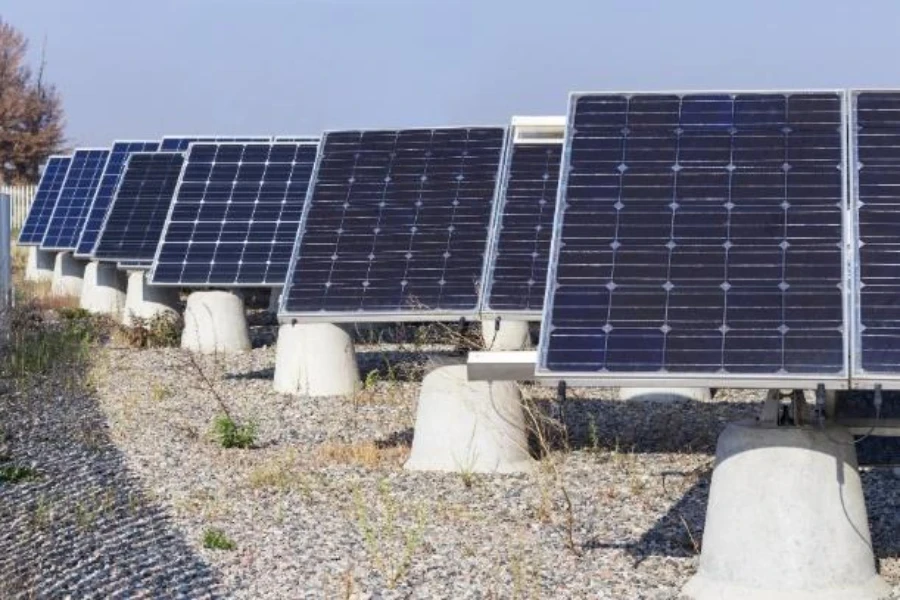
Passive emitter and rear cell (PERC) solar panels feature a special layer of material, such as aluminum oxide, on the back of the solar cell, increasing efficiency. This design helps to capture more sunlight and minimize the loss of electrons.
The lifespan of PERC solar panels is typically similar to that of conventional crystalline silicon solar panels, ranging from about 25 to 30 years. However, the manufacturing cost of PERC solar panels is slightly higher than traditional crystalline silicon panels.
However, with the maturity of the technique and large-scale production, the cost is gradually decreasing. The efficiency of PERC solar panels is usually between 18% and 22%, which is higher than that of conventional crystalline silicon panels.
This type of solar panel has the following advantages:
High efficiency: PERC solar panels are more efficient than traditional crystalline silicon solar panels because they utilize sunlight more efficiently and reduce electron loss.
Better low-light performance: PERC technology allows panels to perform better in low-light conditions, such as late afternoon or cloudy days.
Application scenarios:
Residential and commercial rooftops: PERC solar panels are well suited for residential use and commercial rooftop projects where space is limited due to their high efficiency.
Large-scale solar farms: The high efficiency also makes PERC solar panels popular for large-scale solar farms, especially where there is limited ground space.
Extreme climate regions: PERC solar panels are also well suited due to their excellent performance in regions with harsh high temperatures or low light conditions.
Bifacial solar panels
Bifacial solar panels are capable of capturing sunlight from both sides and generating electricity. These panels have photovoltaic cells on both the front and back of the panel, capturing direct sunlight as well as sunlight reflected to the back of the panel.
The lifespan of a bifacial solar panel is comparable to that of a high-quality conventional single-sided solar panel, usually around 25 to 30 years. Bifacial solar panels typically have higher manufacturing costs than traditional single-sided panels, primarily due to their complex manufacturing process and the utilization of bifacial active materials.
At the same time, installation costs may be slightly higher than those of traditional single-sided panels, especially if there is a requirement to maximize power generation on both sides.
The overall efficiency of bifacial solar panels depends on a variety of factors, including the mounting angle, ground reflectivity, and environmental conditions. Theoretically, they can be 10% to 30% more efficient than single panels.
This type of solar panel has the following advantages:
Higher power generation: Thanks to their ability to capture sunlight from both sides, bifacial solar panels typically produce more electricity than conventional single panels.
Higher efficiency: The efficiency of bifacial panels can be significantly increased under certain criteria, such as when installed on highly reflective surfaces (e.g. white roofs or floors).
Better space utilization: For space-constrained applications, such as in urban environments, bifacial solar panels can make more efficient utilization of the available space.
Application scenarios:
Large solar electric farms: bifacial solar panels can increase power output per unit area, especially in areas with high ground reflectivity.
Commercial rooftop systems: On the roofs of commercial buildings, especially those with highly reflective roofing materials such companies, bifacial solar panels can provide additional power generation.
Parking sheds and building roofs: Bi-directional solar panels are also suitable for structures such as parking sheds, corridor covers, etc., and are able to capture sunlight from both the top and bottom sides.
Trends and challenges
Trends
Solar panel efficiency continues to improve
PERC technology: PERC technology reduces the recombination loss of electrons and improves the photoelectric conversion efficiency of the batteries by adding a passivation layer and a reflective layer on the backside of conventional crystalline silicon solar batteries. This technology has become the mainstream production method.
Bifacial solar panels: By utilizing reflected sunlight from the ground or other surfaces, bifacial panels can capture additional sunlight from the back side. This technology is particularly valuable in areas where the intensity of sunlight radiation is weak, and can significantly increase the power output.
Heterojunction (HJT) solar cells: Combining the advantages of amorphous and crystalline silicon, HJT technology improves electron mobility and overall cell efficiency by adding an amorphous silicon layer to the surface of the crystalline silicon. HJT batteries perform well at low temperatures and in low-light conditions.
TopCon: Tunnel oxide passivated contact (TopCon) technology is an advanced method of manufacturing solar batteries. It significantly enhances cell efficiency and stability by forming a tunnel oxide layer and a passivated contact layer on the backside of a crystalline silicon cell. TopCon technology is particularly suited for applications that require high efficiency and high reliability.
Perovskite solar cells: Perovskite technology is an emerging solar cell technology known for its low cost and high efficiency. These cells use perovskite materials (a type of metal halide) as the light-absorbing layer, offering a cost advantage in manufacturing while maintaining high renewable energy conversion efficiency. Perovskite cells show great potential in the field of flexible and printable solar panels.
Costs keep decreasing
With better production technology, the cost of manufacturing solar panels continues to decrease. For example, automated production, better silicon crystal growth techniques can reduce raw material usage and energy consumption.
Challenges
Balance between technique and cost: The development of new technologies to improve efficiency must be accompanied with cost control to ensure the market competitiveness of PV products.
Sustainability and environmental pollution: The entire process of solar batteries production needs to be examined, including raw material extraction, the manufacturing process and final recycle disposal.
For example, energy consumption and waste disposal during the refining of silicon and the manufacturing of panels are key issues.
Energy storage and power grids: The development of efficient, low-cost renewable energy storage technologies is key to addressing the intermittent character of solar power generation. At the same time, the grid infrastructure needs to be optimized to accommodate access to significant amounts of distributed solar power.
Market and policy support: Government policies, subsidies and tax incentives are critical for the promotion of solar technologies. At the same time, public and private R&D investment is a key factor in promoting technological innovation.
Supply chain: Maintaining high product quality standards while achieving large-scale production. At the same time, there is a risk of fluctuating raw material costs and disruptions in the global supply chain, such as issues with the availability of silicon and silver.
Some tips before you buy
Assess energy needs
Estimate theoretical power generation by considering geographic location and local climate (e.g., average hours of sunlight, weather patterns). Select the angle and orientation of sunlight at a specific location to determine the optimal panel placement angle.
Choose the right type of solar panel
If space is limited, high efficiency is needed, and budget is sufficient, homeowners should choose monocrystalline solar panels. If budget is limited or the available space is larger, however, polycrystalline panels may be more suitable, although slightly less efficient.
Thin-film solar panels (e.g. CIGS, CdTe) are suitable for applications with irregular surfaces or where flexible mounting is required. Bifacial solar panels may provide higher renewable energy yield at locations that can utilize reflected light from the ground or other structures.
Analyze cost-effectiveness
- Calculate the initial installation cost of the solar panels, including the cost of equipment such as panels, inverters, and racking, as well as installation costs.
- Evaluate expected renewable energy output and long-term operating costs, including maintenance and possible panel replacement costs.
- Take into account available government subsidies, tax incentives, and other policy support.
- Estimate the annual renewable energy output of the system and calculate the payback period and rate of return.
Choose an experienced and reputable solar system installer
- Make sure the installation team is aware of local building regulations and grid access requirements.
- Arrange for regular inspections and cleanings to ensure optimal performance of the solar panels.
- Utilize a smart monitoring system to track system performance and identify problems in time.
- Set up a regular maintenance schedule that includes cleaning the solar panels and checking electrical connections.
- For larger projects, consider using a remote monitoring system to check system performance in a real-time manner.
Finally, if you are interested in purchasing solar panels, you’ll find thousands of suitable products from reputable suppliers on Alibaba.com.
